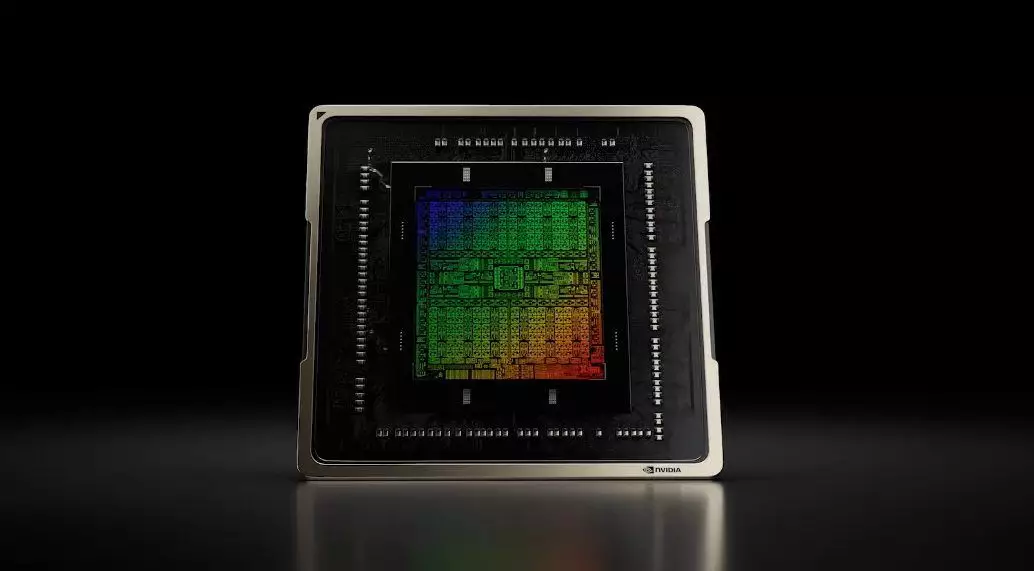In an industry rife with speculation, particularly regarding technological advancements, Nvidia’s interest in developing an Arm processor has generated palpable excitement amongst gamers and tech enthusiasts alike. As discussions swirl about the unveiling of this new computing chip, pivotal questions arise: What will its architecture entail, which markets will it serve, and how might it reshape the gaming laptop landscape? Recent insights from a notable tech YouTuber, Moore’s Law is Dead, point towards optimistic developments, particularly aimed at fostering low-power, high-performance gaming laptops.
The primary focus for Nvidia’s forthcoming Arm processor appears to target the gaming segment of the laptop market, specifically devices equipped for efficient gaming experiences without demanding excessive power consumption. Allegedly set to deliver performance on par with mobile GPUs, like the RTX 4070, under a power ceiling of 80 watts, the implications for mobile gaming could be significant. This potential synergy of decent performance mixed with better power efficiency could very well cater to the rising demand for portable yet powerful gaming options.
Moore’s Law is Dead cites claims from sources associated with Nvidia, specifically highlighting a potential partnership with Dell’s Alienware brand for this new Arm-based APU. This pivotal collaboration potentially positions Nvidia as a key player in delivering cutting-edge mobile gaming systems, allowing gamers to experience rich visual fidelity without the tethering weight of traditional gaming setups.
As Nvidia ventures into this territory, it faces stiff competition from AMD, particularly with the latter’s upcoming Strix Halo APUs, designed to push mobile computing boundaries. AMD’s chips, boasting impressive specifications with configurations featuring extensive RDNA 3.5 compute units and advanced CPUs, elevate the competitive stakes. For Nvidia to remain relevant, especially targeting the same demographic, their Arm APU must deliver graphics capabilities that approach, if not surpass, those of AMD’s offerings.
The suggestion that Nvidia’s upcoming Arm processor could potentially match or slightly underperform relative to AMD’s Strix Halo might not only ignite an exciting rivalry but also encourage innovation within both camps. Such a scenario has historically led to significant advancements, benefiting consumers through improved product performance and value.
The Role of AI and Enhanced Processing Units
In a world that is increasingly intertwined with artificial intelligence, Nvidia’s intentions to embed a robust Neural Processing Unit (NPU) within its forthcoming Arm architecture are no surprise. Given Nvidia’s longstanding reputation as a frontrunner in AI-driven technologies, the integration of an NPU signifies more than mere buzz—it embodies strategic foresight into the future of gaming laptops. This focus on AI capabilities could provide enhancements in performance optimization, including improved graphical outputs and adaptive gaming experiences.
Amidst these advancements, what remains crucial is the successful establishment of an ecosystem that supports Nvidia’s goals. The evolution towards an efficient gaming experience requires not only powerful hardware but also optimally designed software that can leverage the advantages of an Arm architecture. Effective collaboration between hardware capabilities and software adaptability will be indispensable in achieving seamless gaming on these new platforms.
The Path Ahead: Windows on Arm
One of the critical factors that may dictate the success of Nvidia’s foray into Arm-based computing is the evolving landscape of Windows on Arm. Historically, this framework faced limitations in terms of compatibility and performance, particularly with backwards compatibility for existing software titles. However, industry whispers hint at a significant investment from Microsoft to enhance the functionality of Windows on Arm. The rumored improvements, including native support for advanced instruction sets such as AVX and AVX2, are promising signs for the gaming community.
The evolving relationship between Nvidia and MediaTek, coupled with the anticipated expiration of Microsoft’s exclusive deal with Qualcomm, suggests a forthcoming shake-up in the Arm market. It remains to be seen whether we will witness an actual transformation that positions Nvidia’s Arm APU as a pioneering component in portable gaming.
While Nvidia’s journey into the Arm processor realm remains fraught with challenges and competitors, the potential for high-performance, low-power gaming laptops appears to be within reach. As developments unfold, the gaming world waits impatiently—each rumor generating further anticipation for what Nvidia’s strategic maneuvers might mean for the future of mobile gaming.


Leave a Reply